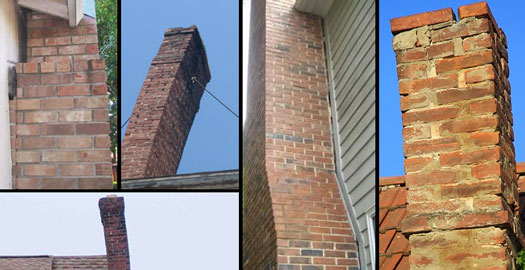
Often you see chimneys pulling away from houses. In most cases, this is caused by differential settlement between the house foundation and the chimney foundation. The chimney often is placed on a separate foundation. Many times, this foundation is only 2’-3’ deep, while adjacent to a full house basement. The basement is typically founded on virgin soil, while the chimney may be on fill, which has a greater propensity to settle. Even if the chimney is not on fill and is on different soil at different elevations it can move differently from the house.
Old style brick chimneys are typically heavy and can induce significant soil pressures. A chimney pulling away from the house can typically exhibit visually as not being plumb, as well as gaps between the chimney and the house. Minor movement can be caulked and monitored. There are generally two methods for addressing this issue which may be performed independently or together. The first method is to tie the chimney into the house structure. This must be done properly, as attaching a strap just into the siding or sheathing would typically do little to stabilize the chimney and the strap can tear out of the siding or sheathing. If properly strapped, a chimney must be attached into the floor diaphragm and the connections must provide adequate resistance to the forces that the chimney puts on them. The foundation may also need to be underpinned. This may entail pit or pad underpinning, where a new footing is poured into the existing or helical or push piles. In many cases, a significant underpinning or rebuilding of the chimney is required and it may make more sense to upgrade the HVAC equipment that the chimney is serving to be a high efficiency system that can directly vent to the exterior without a chimney. The cost to replace the equipment may be similar to the cost to rebuild the chimney and there may be significant savings over time.
